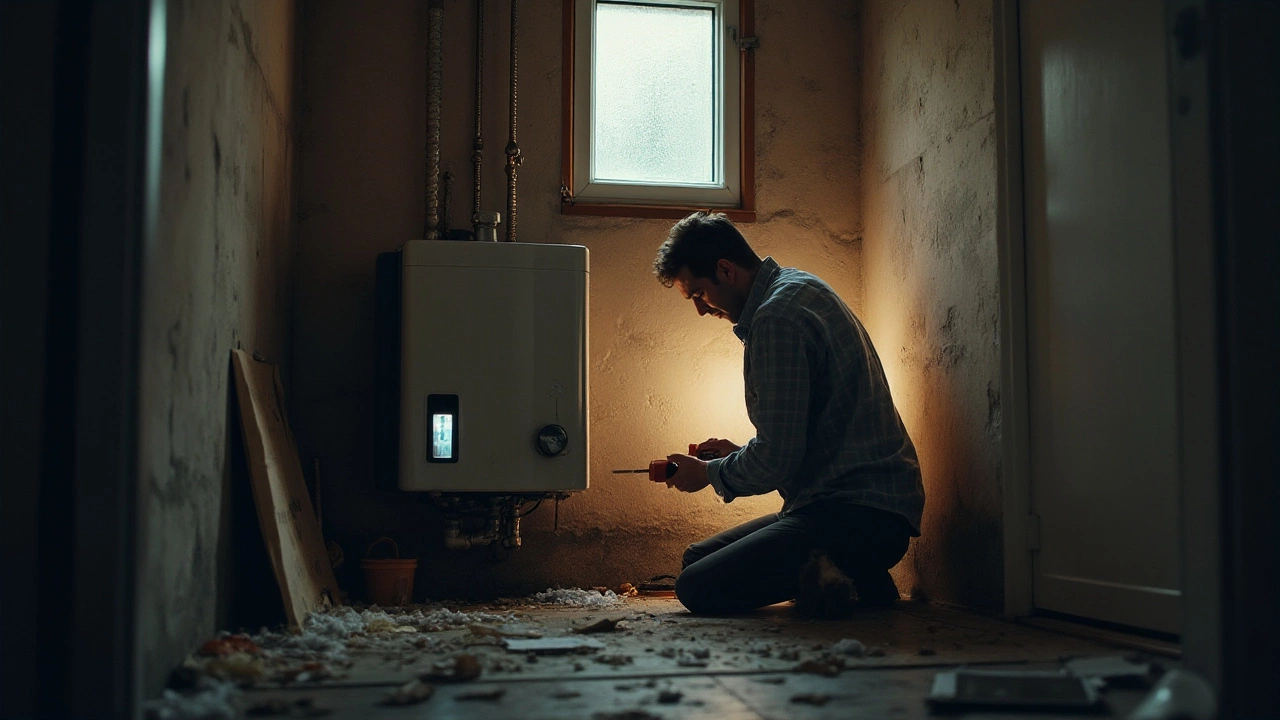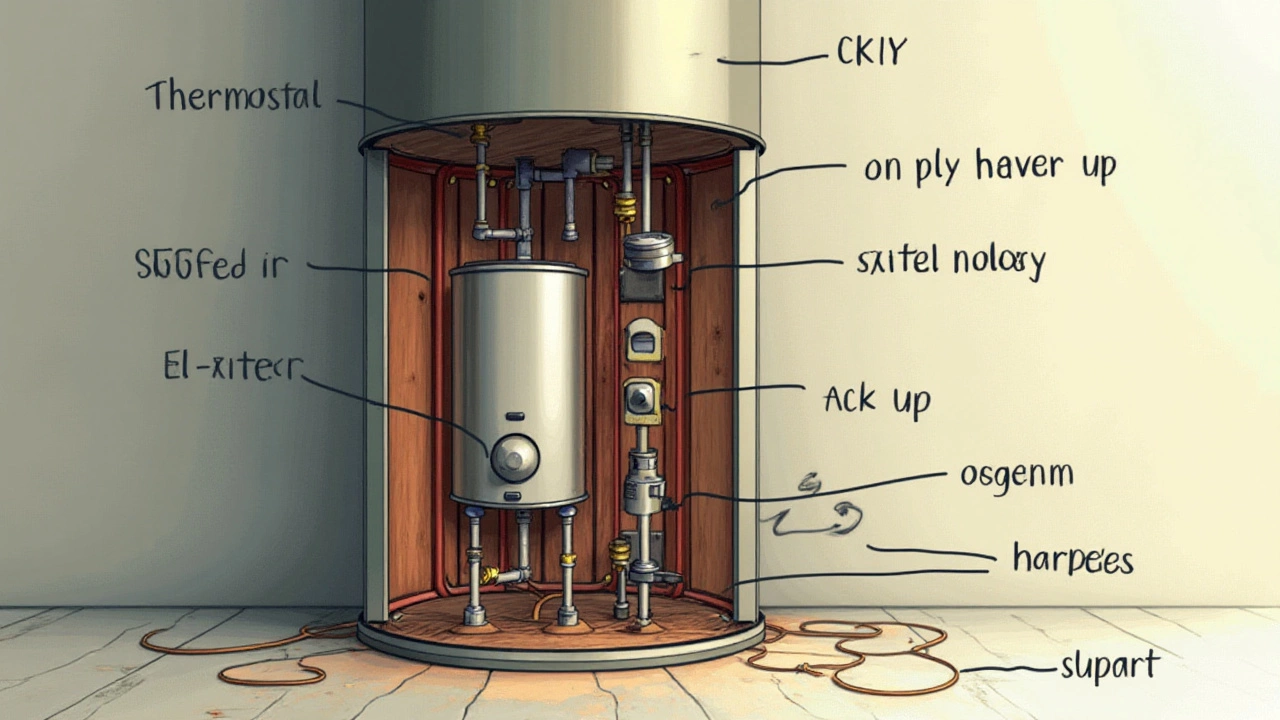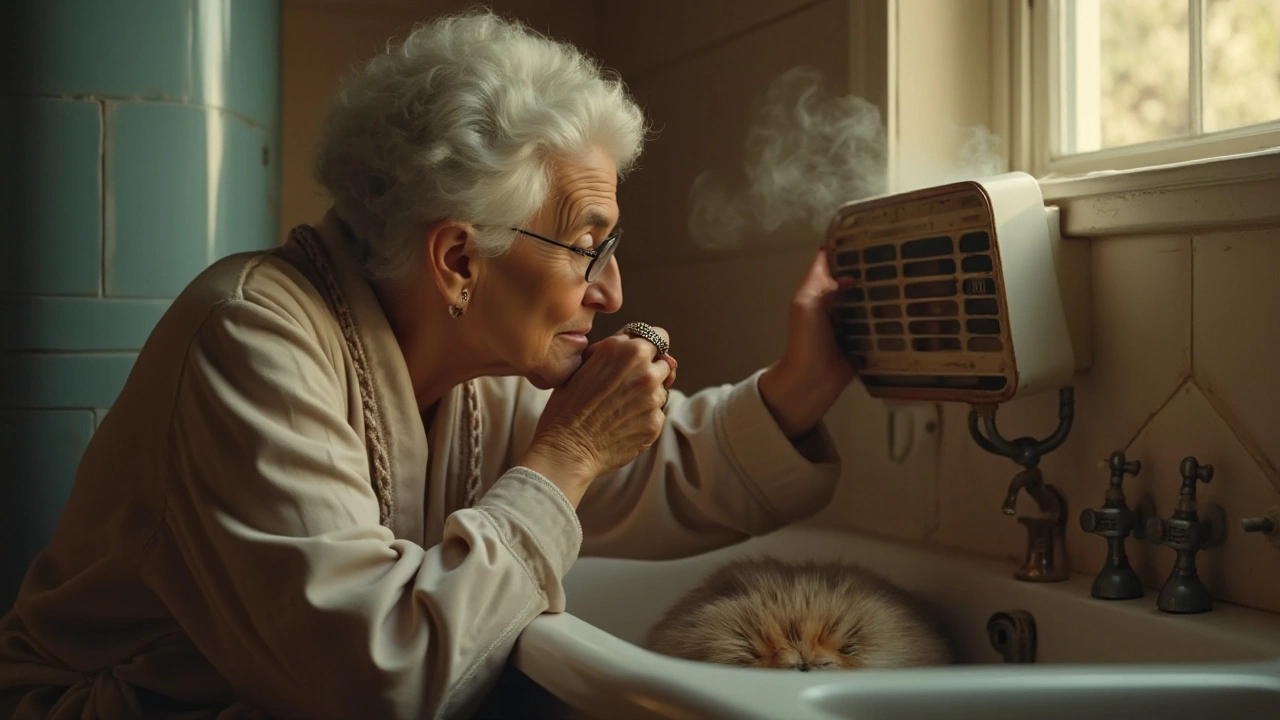There's nothing more disappointing than expecting a hot shower and getting an unexpected shock of cold water instead. If your water heater is failing to deliver the comforting warmth you desire, don't worry—you're not alone. Many homeowners face this chilly predicament at some point.
Diving into the workings of your water heater may seem daunting at first, but understanding the basics can help you pinpoint the problem. There are a few usual suspects when it comes to water heater malfunctions, ranging from electrical issues to mechanical parts.
In this guide, we'll explore some of the most common reasons your water heater might be serving you only cold water. We'll offer tips on what you can do on your own and when it's time to ring up a professional for some expert help. Keep reading to restore your home's hot water supply and enjoy those soothing showers once again.
- Understanding Your Water Heater
- Common Causes of Cold Water Issues
- DIY Troubleshooting Steps
- When to Call a Professional
- Preventive Maintenance Tips
Understanding Your Water Heater
Water heaters are the unsung heroes in our homes. They quietly sit in basements or closets, tirelessly working to ensure there's always hot water on demand. Yet, understanding how these systems function is crucial for anyone looking to troubleshoot issues, such as when your water heater only gives cold water. At their core, water heaters are fairly simple appliances that heat water using electricity, gas, or solar power and store it until needed. The most common type found in households is the traditional tank water heater, which works by drawing water into the tank, where it is heated by an electric element or a gas burner. The hot water is then stored until it is called upon to gush from your tap or shower.
Electric water heaters rely on one or two heating elements and thermostats to maintain water temperature. When a thermostat senses the water is cooler than its setting, it activates the element to heat it up. Gas water heaters, on the other hand, utilize a gas burner located under the tank, which is ignited either manually or via a pilot light. A thermostat regulates the gas flow to maintain the desired temperature. Newer models might also include intricate safety features such as valves and automatic shut-offs, aiming to prevent the water from reaching dangerous temperatures.
A critical component of understanding your water heater lies in recognizing its limitations and specifications. For instance, each water heater has a capacity and efficiency rating, which can affect how quickly it can provide hot water after the supply has been depleted. An average unit might hold anywhere between 40 to 60 gallons, with the ability to reheat a full tank within about an hour under optimal conditions. In a household where the demand for hot water is high, knowing these specs can guide you in adjusting usage or upgrading your appliance.
"The importance of understanding your water heater cannot be understated," explains energy efficiency expert Richard Hansen. "Knowing the model, age, and maintenance history can save homeowners both time and money when issues arise."
It's also essential to be familiar with the signs of aging or faulty components, as this can help predict when repairs or replacements might be necessary. Corrosion, leaks, or strange noises are often indicators of underlying issues, as are fluctuations in water temperature. By regularly inspecting and maintaining the water heater, one can extend its lifespan and ensure a consistent supply of hot water.
For DIY enthusiasts, accessing the manual and identifying key parts like the T&P (temperature and pressure) relief valve, anode rod, and dip tube can empower you to handle minor issues without professional intervention. Troubleshooting often involves checking electrical connections, confirming that the thermostat settings are correct, and ensuring that the circuit breaker or pilot light is operational. Still, given the complexity of these systems, never hesitate to consult a knowledgeable technician when necessary, especially when dealing with gas-powered units to avoid any potential hazards.
Common Causes of Cold Water Issues
When you turn the tap, expecting steaming hot water and instead get a frigid surprise, it's time to play detective. There are several potential culprits behind a water heater repair need. One of the most frequent offenders is a faulty thermostat. The thermostat controls water temperature, and if it’s not functioning correctly, the tank won't heat the water to the desired temperature. Thermostats can wear down over time, much like any home appliance component, which leads to inaccurate readings and cold water woes. Replacing or recalibrating the thermostat might resolve the temperature issue, but diagnosing whether it's the true cause can sometimes require a bit of professional insight.
Another usual suspect when dealing with cold water issues is the sediment build-up. Over time, minerals present in water, such as calcium and magnesium, settle to the bottom of your water heater tank. This build-up can lead to inefficient heating processes because it creates a barrier between the heating elements and the water itself. The heating elements, thus, have to work harder or become overwhelmed altogether, leading to lukewarm water, at best. Regularly flushing out your water heater can help prevent sediment layers from getting out of hand, a simple maintenance task that many homeowners overlook.
If you have an electric water heater, a tripped circuit breaker can also be the root of your ice-cold shower troubles. Electrical components are sensitive to power surges and disruptions. Checking the breaker box might reveal a simple switch flip that restores your water heater to its warm, comforting self. Sometimes, breakers trip due to an overloaded circuit or faulty wiring, which are issues that might need a professional electrician for a proper fix. However, a quick peek at the panel could potentially save you the inconvenience of a plumber's visit.
Water heater anode rods could also be part of the problem. These rods are made of magnesium or aluminum and are designed to protect the tank from corrosion. Over time, as they do their job, they corrode themselves and need replacement. If they are entirely consumed, the tank could rust, interfering with the heating effectiveness and leading to water temperature issues. Maintaining anode rods is a proactive strategy that homeowners can undertake to extend the life and efficiency of their water heater.
According to Janeen Smith, a renowned home maintenance expert, “Sediment build-up is probably the most underrated cause of cold-water issues. A simple quarterly flush can save owners from the hassle of unexpected cold showers.”
Lastly, consider the age of your heater. Water heaters are not immortal, and with typical lifespans ranging from 8 to 12 years, their efficiency can decline as components wear out. If yours belongs to this age bracket and consistently fails to deliver hot water, a replacement might be worth considering. Evaluating whether frequent repairs outweigh the cost of a new, energy-efficient model can ultimately save you money and inconvenience.

DIY Troubleshooting Steps
If you're facing the chilly dilemma of a water heater that isn't producing hot water, rolling up your sleeves for a bit of DIY troubleshooting can be quite rewarding. Before jumping to conclusions, it's essential to methodically inspect the various components of your water heater. Often, the issue can be something simple that you can fix without professional assistance. However, remember to always prioritize safety when dealing with electrical appliances, and make sure the power supply is switched off before you start poking around.
Check the Power Supply
Begin by examining the power source of the water heater. An electric water heater that has tripped a breaker will naturally result in a cold water issue. Head to your electrical panel and look for any tripped breakers. If you find one, flip it back to the 'on' position. However, if this keeps happening, it might indicate a deeper electrical problem. For natural gas heaters, ensure that the gas supply is turned on and that the pilot light is lit. A snuffed out pilot light is a common culprit that disrupts hot water flow. Relighting it requires caution and following the manufacturer's instructions precisely.
Inspect the Thermostat
The thermostat is a crucial component in regulating water temperature. Set it between 120 to 140 degrees Fahrenheit for optimal performance. If the actual water temperature doesn't match the setting, the thermostat might be faulty. Some water heaters have more than one thermostat. In such cases, checking both is advisable. If adjustments don't solve the issue, consider replacing the thermostat. This task might seem tricky, but with patience and a good guide, it's manageable even for beginners.
"Technicians often find that thermostat missettings are responsible for nearly 30% of cold water complaints," remarks John Harper, a seasoned HVAC expert.
Examine the Heating Element
Faulty heating elements are another usual suspect when it comes to the absence of hot water. These elements can burn out over time due to sediment build-up or wear and tear. Testing them requires a multimeter, which is a handy tool for various home repair tasks. Disconnect the power, remove the access panel, and check the elements for continuity. If they lack continuity, they're likely damaged and will need replacing. This task is a bit hands-on but immensely satisfying once you've fixed it yourself.
Dealing with Sediment Buildup
Sediment buildup inside the tank is an issue that can lead to numerous problems, including reduced heating efficiency. Flushing the tank at least once a year can help prevent this. To flush, start by switching off the heater and attaching a garden hose to the drain valve. Run the hose to a safe location, like a drainage system or garden, and open the valve to let out the sediment-laden water. Be sure the water runs clear before you close the valve, refill the tank, and restore power. Regular maintenance of this nature extends the life and efficiency of the heater.
When to Call a Professional
There comes a time in every homeowner's journey when tackling a DIY project just isn't enough. If your water heater repair attempts seem to lead nowhere, it might be time to consider bringing in the professionals. While basic troubleshooting can address some minor issues, there are certain situations where expert intervention is not just advisable, but necessary. For instance, if you have addressed the reset button and checked the power supply yet the problem persists, it's likely a sign of a deeper issue at play.
One common scenario demanding professional expertise is when there's evidence of a leaking tank. Water pooling around the base of your heater could signify a damaged tank, which might require a replacement. Another red flag is persistent noise emanating from the unit, which could suggest sediment build-up affecting the efficiency of the heater. Attempting to flush the sediment yourself can sometimes thin the layer, but professionals have the tools needed for a comprehensive clean.
More complex problems like electrical faults, including overloaded circuits, or a constant tripping breaker should also be left to trained electricians. Such issues involve working with complex wiring and potential risks that go beyond basic maintenance knowledge. It's essential to remember that electric water heaters involve high voltage, and gas heaters contain their own hazards, so safety should always be prioritized.
"Don't shortchange on expertise when it comes to repairs," advises an experienced plumber from the New Zealand Plumbers Association.
"A professional knows the ins and outs of water heating systems and can often diagnose issues that elude the layperson."While the DIY spirit is commendable, knowing when to call in the professionals not only could save the system, but also ensures the safety and efficiency of your home's system.
Consider the age of your water heater, too. If your unit is over a decade old, repairs might provide only a temporary respite. Professional assessment could guide you towards the decision to install a newer, more energy-efficient model. Remember, newer models often come with better warranties and eco-friendly technology, making the investment worthwhile.

Preventive Maintenance Tips
Keeping your water heater in good working order is crucial to ensuring it delivers a consistent supply of hot water. Regular water heater repair and preventive maintenance can save you from unexpected breakdowns and cold water surprises. The good news is that a little periodic attention can extend the lifespan of your unit and enhance its efficiency. With so many things competing for attention these days, it can be easy to overlook the importance of regular water heater check-ups. However, setting aside a little time for maintenance can save you bigger hassles in the future.
One of the most effective steps is to regularly check the pressure relief valve. This small component is responsible for releasing pressure from the tank, and if it’s not functioning properly, it can lead to dangerous levels of pressure building up inside. Simply lift the valve’s lever and listen. Does water gush out? If yes, that’s a good sign. If not, it might be time for a replacement. Another aspect is ensuring that the temperature setting is not too high. Keeping it around 120 degrees Fahrenheit usually balances energy conservation and comfort, and it minimizes the risk of scalding and cold water scenarios.
Flushing the tank periodically helps to clear out sediment that can cause blockages and reduce efficiency. Over time, minerals from your water supply can build up inside your water heater, leading to rust and corrosion. Draining your tank every six months is often recommended. To do this, turn off the electricity or gas, attach a hose to the drain valve, and lead it to a safe drainage location. Ensure the water flows clear before you stop the process. Draining out the sediment not only improves performance but can help prevent the need for extensive troubleshooting later on. Remember, neglect can lead to sediment calcification which is much tougher to remove.
For those who prefer visual guidance, various DIY videos can be helpful. Though convenient, it is essential to exercise caution and wear protective gear when performing any maintenance. According to an article by Home Repair Magazine, "A well-maintained heater can increase your home’s energy efficiency by as much as 15%". This data suggests that consistent upkeep significantly impacts your energy bills and comfort level in your home.
The insulation of pipes and the tank itself is another crucial area. Particularly in colder climates, insulating your pipes can prevent heat loss, helping maintain water temperature as it travels from the heater to you. You can purchase pre-slit foam pipe insulation at most hardware stores and wrap it around your plumbing. Similarly, adding a layer of insulation to your water heater tank can keep it from losing heat as well as reduce standby heat loss. This extra layer of care helps your unit work less to maintain the desired temperature, potentially stretching its life span further while lowering your utility bills.

I am an expert in the services industry with a focus on appliance repair. My passion lies in understanding how things work and educating others in simple, engaging ways. This enthusiasm fuels my writing, where I delve into topics around appliance maintenance and troubleshooting. I aim to make these subjects clear and accessible to all readers.